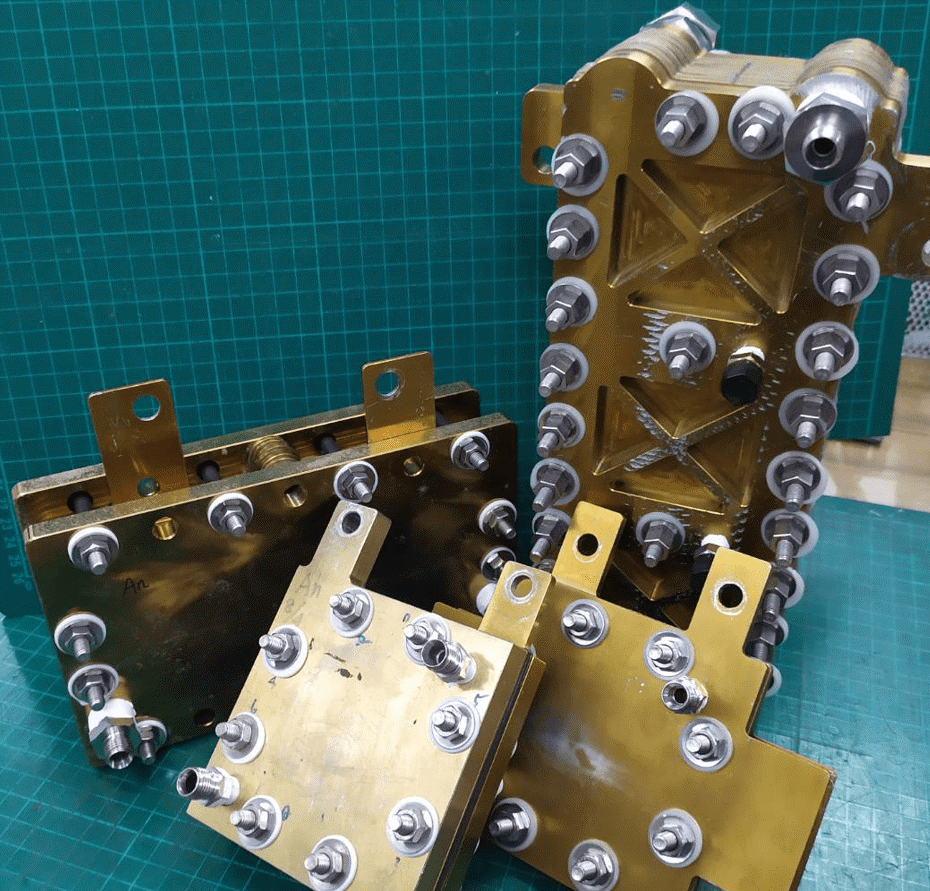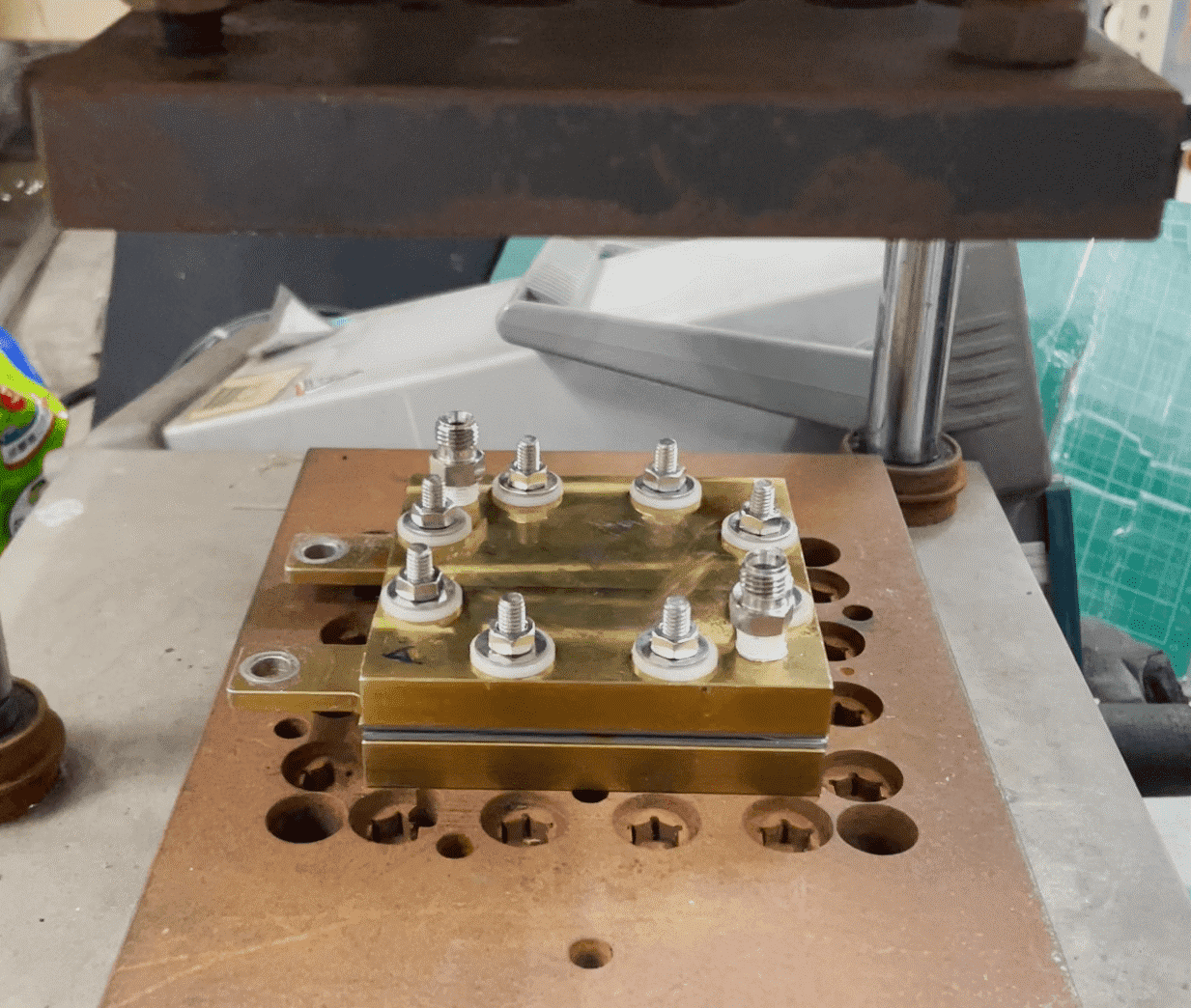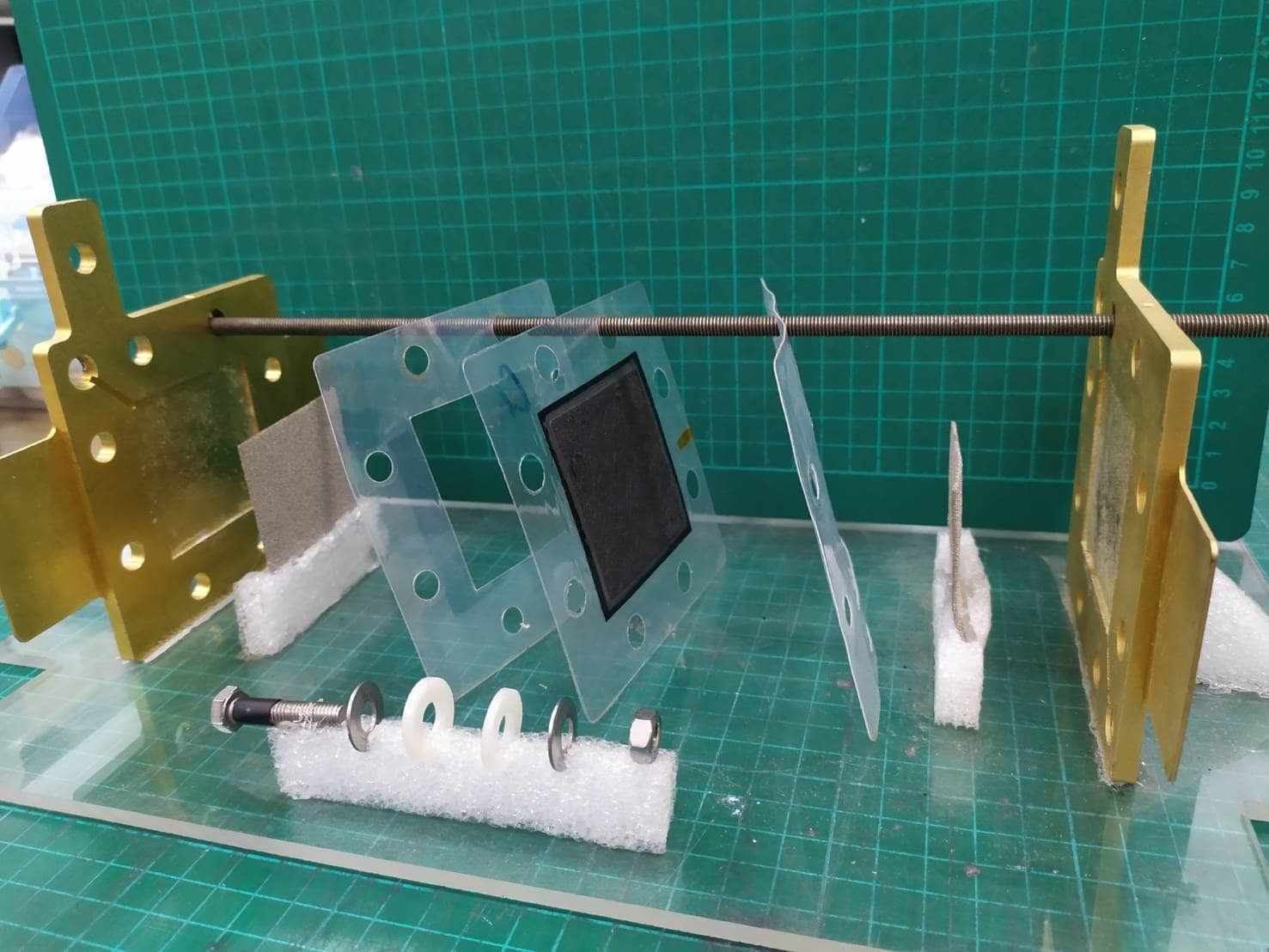| Technical Name | Solid oxide electrolyzer integrated with ultra-low Pt catalysts proton exchange membrane fuel cells | ||
|---|---|---|---|
| Project Operator | National Central University | ||
| Project Host | 曾重仁 | ||
| Summary | The use of high-efficiency solid oxide electrolysis cell to produce hydrogenthe use of proton exchange membrane fuel cells with ultra-low platinum catalysts for gas to power conversion enables the application of hydrogen energy technology from the source to the back end, thereby reduces the overall system cost of high efficiency system. Further reaches the power generation with net zero carbon emission targets. |
||
| Scientific Breakthrough | The high-efficiency proton-type solid oxide electrolysis cell converts water vapor into hydrogen protons at the anode. Protons are transferred to the cathode through the barium, cerium, zirconium,yttrium oxide BaCe0.6Zr0.2Y0.2O3-δ, (BCZY) electrolyte to generate hydrogen. Hydrogen is converted to power by high-efficient proton exchange membrane fuel cell (PEMFC). Platinum in PEMFC membrane electrode assembly is reduced by 5 times when compared to the traditional process (200+400) mg/cm2,a similar PEMFC performance is maintained. |
||
| Industrial Applicability | This technology is suitable for applications utilizing high-temperature waste heat in power plantsindustries such as power plants, steel industries, hospitals etc.,in large-scale areas that require a high-stability power supply. The waste heat reaches the SOEC operating temperatureundergoes an electrolysis reaction to generate hydrogen. In addition, the use of pulsed laser deposition to prepare ultra-low platinum catalyst proton exchange membrane fuel cells for power generation reduces the overall capital cost. This project helps in developing a reduced costhigh efficient energy conversion processes. Further promotes in global standardstargets to meet net zero carbon emission power generation. |
||
| Keyword | Proton solid oxide electrolyzer cell electrolyte proton conducting combined heat and power ceramics hydrogen production technology pulsed laser deposition ultra-thin catalyst layer catalyst proton exchange membrane fuel cell | ||
- Contact
- National Central University
- ncuestd@gmail.com
other people also saw







